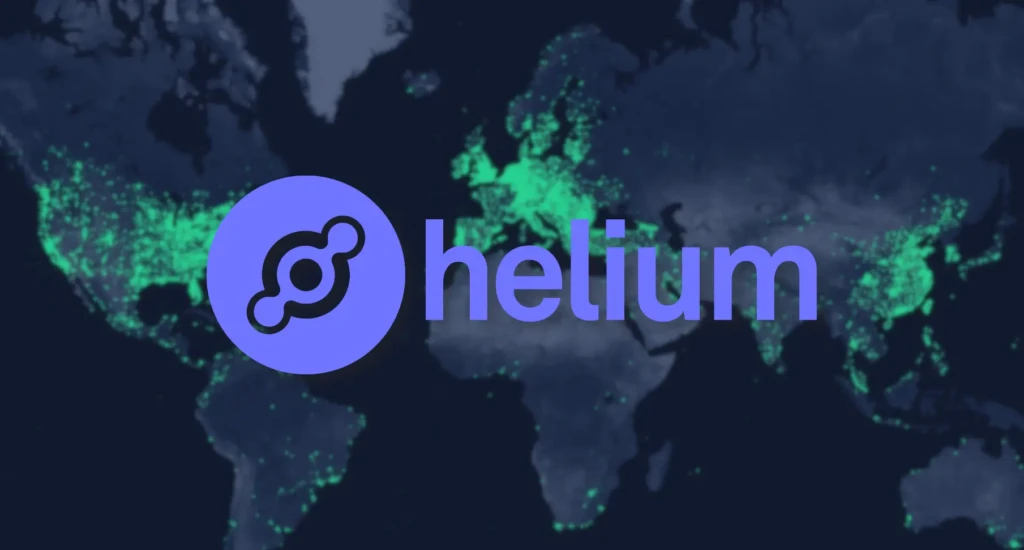How Does Helium Work in Crypto? Understanding the Decentralized IoT Network
In the evolving landscape of blockchain technology, Helium (HNT) stands out by merging cryptocurrency with real-world wireless connectivity. Unlike traditional blockchain applications, Helium focuses on providing decentralized wireless infrastructure for Internet of Things (IoT) devices. This article delves into how Helium operates, its unique mining mechanism, and its impact on the IoT industry.
What Is Helium (HNT)?
Helium is a decentralized wireless network designed to offer low-power, long-range connectivity for IoT devices. Utilizing blockchain technology, Helium enables individuals to participate in building and maintaining this network through a unique mining process. The native cryptocurrency, HNT, serves as both an incentive for network participants and a means of transaction within the ecosystem.
The Helium Network: A Decentralized Approach to IoT Connectivity
At its core, Helium’s network comprises two primary components:
- LoRaWAN Network: This network facilitates communication between IoT devices over long distances with minimal power consumption. It’s particularly suited for devices like sensors and trackers that require infrequent data transmission.
- Mobile Network: In addition to IoT connectivity, Helium has expanded to provide mobile network coverage through decentralized Wi-Fi hotspots, integrating with existing infrastructure to offer cost-effective wireless services.
How Does Helium Mining Work?
Helium mining differs significantly from traditional crypto mining. Instead of solving complex mathematical problems, Helium miners (or Hotspot operators) earn HNT by providing wireless coverage and validating network transactions. Here’s how the process works:
- Setting Up a Hotspot: Individuals purchase a Helium-compatible device, known as a Hotspot, and install it in a location with optimal coverage potential.
- Providing Coverage: The Hotspot communicates with nearby IoT devices, facilitating their data transmission over the LoRaWAN network.
- Proof of Coverage: Helium employs a consensus mechanism called Proof of Coverage (PoC), where Hotspots verify each other’s locations and signal strength, ensuring the network’s integrity.
- Earning HNT: Hotspot operators are rewarded with HNT based on their contribution to the network, including coverage quality and data transfer activities.
The Role of the HNT Token
The HNT token is central to the Helium ecosystem, serving multiple purposes:
- Incentive for Miners: Hotspot operators receive HNT as rewards for their contributions to the network.
- Transaction Fees: HNT is used to pay for data transfers within the network.
- Burn Mechanism: A portion of HNT is burned to create Data Credits, which are used for network services, effectively reducing the total supply and introducing scarcity to the token.
Helium’s Transition to the Solana Blockchain
In a significant development, Helium migrated from its proprietary blockchain to the Solana blockchain in 2023. This transition aimed to enhance scalability, reduce transaction costs, and accelerate the development of new features. The move was part of Helium Improvement Proposal 70 (HIP 70), reflecting the community’s commitment to optimizing the network’s performance.
Setting Up a Helium Hotspot: A Step-by-Step Guide
For those interested in participating in Helium mining, setting up a Hotspot involves several key steps:
- Selecting a Hotspot: Choose a Helium-compatible device that meets your coverage needs and budget.
- Optimal Placement: Install the Hotspot in a location with minimal interference and maximum potential for connecting with IoT devices.
- Connecting to the Network: Use the Helium mobile app to connect your Hotspot to the network, ensuring it’s properly configured and operational.
- Monitoring Performance: Regularly check the performance metrics through the app to ensure optimal operation and maximize HNT earnings.
Challenges and Considerations
While Helium offers innovative solutions, there are challenges to consider:
- Initial Investment: The cost of purchasing and setting up a Hotspot can be significant.
- Location Dependency: Earnings are influenced by the Hotspot’s location and the density of other Hotspots in the area.
- Regulatory Factors: Compliance with local regulations regarding wireless transmissions and cryptocurrency activities is essential.
Future Outlook for Helium
Looking ahead, Helium’s integration of blockchain with IoT connectivity positions it as a potential leader in the decentralized wireless infrastructure space. The ongoing development of 5G capabilities and expansion into mobile networks could further enhance its utility and adoption. However, the success of Helium will depend on continued innovation, community engagement, and adaptation to regulatory landscapes.
FAQ: How Does Helium Work in Crypto?
Q1: How does Helium work in crypto mining?
Helium mining involves setting up a Hotspot that provides wireless coverage for IoT devices. Miners earn HNT tokens as rewards for facilitating data transmission and validating network transactions.
Q2: How does Helium’s Proof of Coverage mechanism function?
Proof of Coverage ensures that Hotspots are providing legitimate wireless coverage by verifying each other’s locations and signal strength, maintaining the network’s integrity.
Q3: How does Helium’s HNT token contribute to the network?
HNT serves as an incentive for miners, a means of transaction within the network, and is partially burned to create Data Credits, introducing scarcity to the token.
Q4: How does Helium’s migration to the Solana blockchain impact its operations?
The migration enhances Helium’s scalability, reduces transaction costs, and accelerates the development of new features, optimizing the network’s performance.
Conclusion: Helium’s Role in the Future of Decentralized Connectivity
Helium’s innovative approach to combining blockchain technology with IoT connectivity offers a glimpse into the future of decentralized wireless infrastructure. By enabling individuals to participate in building and maintaining the network, Helium democratizes access to wireless services and fosters community-driven growth. As the demand for IoT devices and decentralized networks continues to rise, Helium’s model could serve as a blueprint for future developments in the field.

